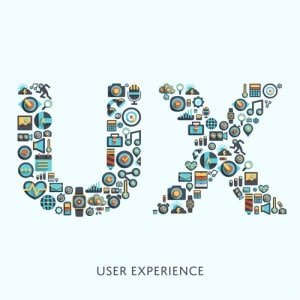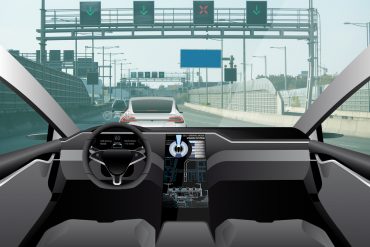
The consumerization trend has raised expectations for what we expect of our business applications. Improvements in the user experience (UX) is no different.
The consumerization trend has massively raised the bar for what we expect of our business applications. Together with emerging technologies such as AR, VR, voice activation and new ways to personalize enormous flows of data, this redefines enterprise software user experience (UX).
The clear link between user engagement and profitability is beyond doubt. This has been apparent on the consumer side for years. Moreover, just look at Walmart’s massive 2016 redesign of its UX and e-commerce platform, which resulted in 214% growth in digital visitors, and Bank of America, which increased its online banking registration by 45% after a UX redesign of the process.
So how does this translate to enterprise software? Surprisingly little research is available on the topic of how enterprise software usability affects profitability. In my discussions with customers, I see that businesses are increasingly realizing that UX correlates closely to user engagement. The implications of successful UX make it way more than just a satisfaction ranking. Increased workforce engagement is tied closely to improved performance, motivation and persistence, before we even get to effectiveness, time and cost savings, or the improved employer branding advanced UX applications give. All of this results in increased profitability.
See also: How AI will change UX
An IFS usability study of over 200 enterprise software users in industrial companies found a strong correlation between digital transformation and software usability. Respondents who said their enterprise software prepared them for digital transformation, for instance, were 400 percent more likely to say their enterprise software was very easy to use. Software usability can also affect employee retention among experienced staff. In the same survey, almost 46 percent of the middle-age demographic would consider changing jobs due to poor enterprise software usability.
One concrete example is Deloitte, which states that incorporating usability into the redesign of a client’s ERP systems led to a 300% increase in worker productivity, a 55% reduction in training time and a 21% improvement in upselling and cross-selling. It is apparent that there is a close correlation between business success and software usability on the enterprise market as well.
Key trends reshaping enterprise software UX
A couple of strong trends from the consumer market are redefining the meaning of enterprise software UX today. Let’s take a closer look at those.
Consumerization: The consumerization trend has been ramping up for a couple of years now and consists of two interconnected developments:
- Mobile is the new normal: As we use mobile phones for everything in our personal lives, this also raises the bar for how we expect to use enterprise software on our phones. A growing number of organizations are implementing responsive designs that adapt across platforms and screen sizes to allow various mobile devices to interact with business software. “Mobile first” has become a common UX strategy for consumer software. Although in enterprises the majority of work is still done on laptops and desktops, mobile has to be an equal possibility for users. So, whereas mobile first might apply for a number of specific business processes within enterprise software, mobile as a choice applies to all processes.
- Consumerized usage behaviors: As people are getting used to swiping on their smartphones and using chat apps, such as WhatsApp or Facebook Messenger, this quick interaction has also become what they expect from enterprise software. Delivering an intuitive, clean and visually appealing UX that allows quick actions without going through too many steps before performing a task is a must. This has been the motivator behind IFS enabling companies in China to interact with IFS Applications through the popular WeChat social networking service.
Personalization: Rapidly increasing data volumes within organizations have made it even more urgent to personalize information and make it available at a glance. The CEO needs top-level financial data whereas the service engineer may need the latest asset status from the energy plant or manufacturing line. Role-based user interfaces have been developed to meet these individual needs. When paired with new technologies such as AI and machine learning, the role-based interface can also become intelligent, predicting how you want your personalized interface displayed and automatically adapting what information is shown, for example depending on the device you use and how much is practical to display. The future user interfaces will be smart and evolve to learn from your past actions and preferences.
Voice and chat UX: UX does not just have to be visual, forms and lists. Consumer-focused interfaces, such as Siri, Cortana, and Alexa, have accelerated the adoption of voice and chat as an interface in the enterprise arena as well. The benefits are clear; you can search for data and perform tasks within your system using voice or chat through Skype, Messenger, or any other channel instead of having to use a dedicated enterprise application and click through endless menus and structures. This provides vital benefits for casual users, who can interact in a more convenient way, and for professionals such as service engineers, who can use their hands when repairing an asset while searching for instructions using their voice.
Virtual, augmented or mixed—reality becomes a UX: Moving us even further beyond screen display or voice notions of UX is the growing take-up of AR and VR. Since its start 10 years ago, augmented reality has matured fast. Companies like XMReality offer AR remote guidance, where field service experts can help maintenance engineers in the field solve complex problems as if they were physically present. Such technologies have gone from being exploratory R&D projects to mature solutions extraordinarily quickly, and it will not take long before we see broader adoption.
Another opportunity to leverage these technologies is through mixed reality, which combines augmented reality and virtual reality using devices such as the Microsoft HoloLens. Imagine service engineers who can visualize data from the business software directly on an asset that is to be serviced via their safety glasses. This will make it possible to work on repairing the asset with both hands while having the service instructions right in front of their eyes! The intuitive, easy-to-use UX of mixed reality, combined with enterprise software data, could reshape how we think about enterprise UX in the future. This scenario is actually an ongoing research project within IFS Labs.
How do you measure user engagement?
The technologies discussed above are in varying states of maturity. But no matter what technology is used, measuring the success of your software UX will always be key. User engagement is so important today that it must be monitored just like customer satisfaction or other important KPIs. You can do it in a number of ways, from having the users rank features in a usability index, track when and how features are used or arrange feedback sessions with user groups. UX also has an impact on important business metrics such as employee productivity and employee satisfaction (and retention). It is important not only to assess all of these parameters before, during and at the end of a specific implementation, but they should also be continual gauges of operational success.






























